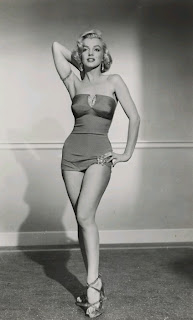Vivienne
Westwood
 Vivienne was born
in Glossop, Derbyshire on the 8th April 1941 under the full name of
Vivienne Isabel Swire. Vivienne got the last name ‘Westwood’ from marrying now
her ex-husband, Benjamin Arthur Westwood. They got married in 1962 but divorced
three years later in 1965.
Vivienne was born
in Glossop, Derbyshire on the 8th April 1941 under the full name of
Vivienne Isabel Swire. Vivienne got the last name ‘Westwood’ from marrying now
her ex-husband, Benjamin Arthur Westwood. They got married in 1962 but divorced
three years later in 1965.
In 1961 Westwood originally
trained in Willesdon, London, as a primary school teacher. Six years after the
divorce, 1971, Westwood switched from being a teacher and went on to designing
with her young partner Malcolm Edwards now known as Malcolm McLaren.
Westwood started
her own brand in 1983 where she became known as the ‘Queen of Rock’. This led
to Westwood and McLaren opening up their first store in Chelsea. They named the
store ‘Let It Rock.’ In 1972, the shop’s name changed to ‘Too Fast to Live, Too
Young to Die’ and Westwood’s collection was urban culture and rock. The shops
impression became leather zips, slogans and chains on t-shirts as well as
pornographic images as a result.
Westwood’s first
design was a pair of gold drainpipe trousers that had been put up for sale in
their shop.
 By
1981 Westwood was prepared for hers and McLarens first catwalk show in Olympia.
This was ‘The Pirate Collection’. But sadly, in 1983 Westwood’s collaboration
ended with McLaren and she began her ‘Witches Collection’. After what seemed a
rebellious stage in 1987 Westwood went for a more childish approach with the
‘Queen Elizabeth Teen’ look.
By
1981 Westwood was prepared for hers and McLarens first catwalk show in Olympia.
This was ‘The Pirate Collection’. But sadly, in 1983 Westwood’s collaboration
ended with McLaren and she began her ‘Witches Collection’. After what seemed a
rebellious stage in 1987 Westwood went for a more childish approach with the
‘Queen Elizabeth Teen’ look.
Then in 1989, Westwood
received a key achievement of having her name in a list of the top six
designers. Other names included in the 1989 list were; Armani, Lagerfield,
Saint Laurent, Lacroix and Ungaro. Two years later (1991) Westwood received an
award for the ‘Fashion Designer of the Year’ given by the British Fashion
Council.
Westwood also had
a range of other products to sell such as her perfume Boudoir, which launched
in 1998 along with many accessories that became available a year later.
Westwood uses websites to show her work in many ways such as on the catwalk.
You can also see her designs in books and magazines.
 When asked who
her customers were on London Fashion Week website, she quoted; “My customers
are the best ambassadors for my clothes. When people discover them, they seem
to have an edge. Although I’m very proud of my customers, I also love to dress
the supermodels. Glamour has a sense of archetype and I adore those archetypal
beauties. Fashion is alive when it is being worn and talked about.”
When asked who
her customers were on London Fashion Week website, she quoted; “My customers
are the best ambassadors for my clothes. When people discover them, they seem
to have an edge. Although I’m very proud of my customers, I also love to dress
the supermodels. Glamour has a sense of archetype and I adore those archetypal
beauties. Fashion is alive when it is being worn and talked about.”
I feel that
Westwood’s designs and work are to astonish and shock people as she goes for
outrageous designs. When Westwood goes for a style change, you can see there’s
a sudden transformation because they alternate from pop, punk rock to a French
look and other styles. You can also see she contrasts her work a lot as well
with colours and patterns etc. She gets her insights from classical music,
culture, books and paintings as well as having of merchandise in many shops in countries
such as the UK and Milan meaning some of her designs are cultural.







































